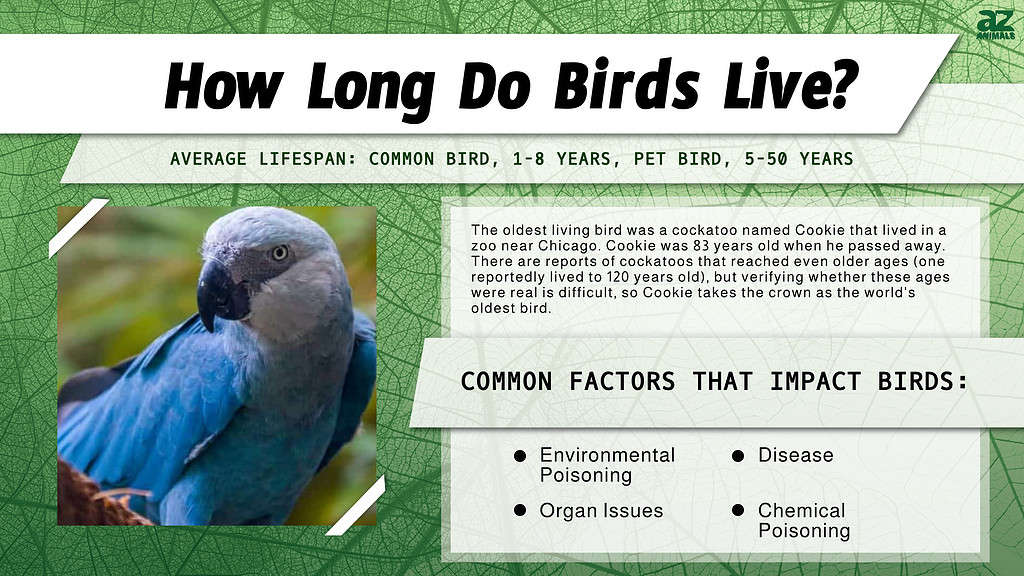
There is such a wide range to a bird’s lifespan if we consider all species both wild and domesticated. Birds can live anywhere from four to one hundred years!
For this article, we will explore the question, “How long do birds live?” for both wild and domesticated birds. For now, let’s take a deeper dive and break down the lifespan of the top 5 Pet Birds in the U.S.
Pet Birds: Top 5 Most Popular Pet Birds and Their Life Expectancy
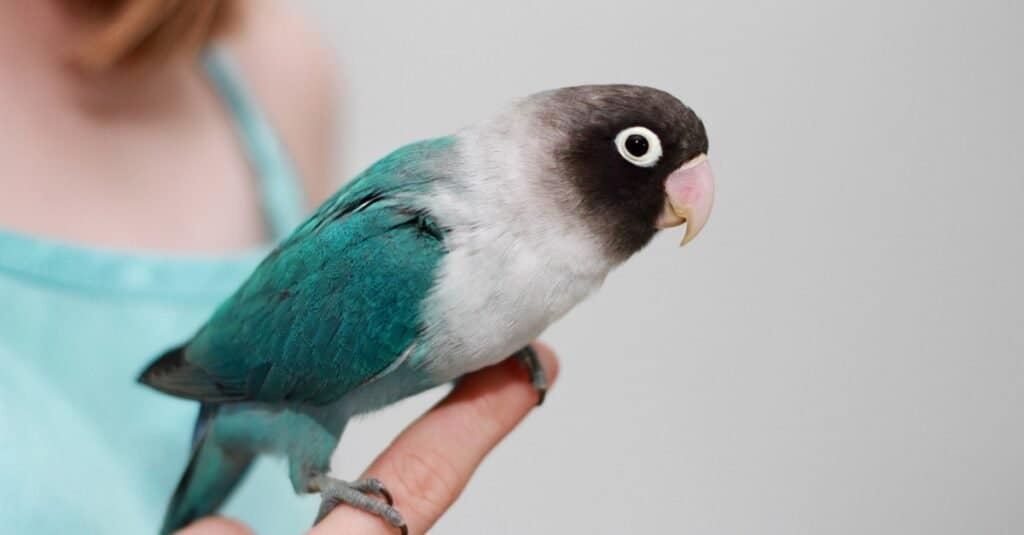
Cute Masked Lovebird sitting on girl’s finger. These types of pet birds are named for the intense bond formed between a pair.
©JCM Photos/Shutterstock.com
Five of the most popular pet bird include:
How long do birds live? The lifespans for these bird species that are popular pets range from 5 years all the way up to 50 years. Birds can live to very advanced ages. As you’ll see shortly, one cockatoo reached 83 years old!
If you’re looking for a pet bird its important to know how long your companions could live for. Let’s dive into each of these five birds and their lifespans.
Parakeets – In captivity, well-cared-for parakeets (budgies) can live for 5 to 15 years. This puts parakeets at the bottom of the longevity scale when compared to other birds. The world’s oldest parakeet was named Charlie and lived to be 29 years old.
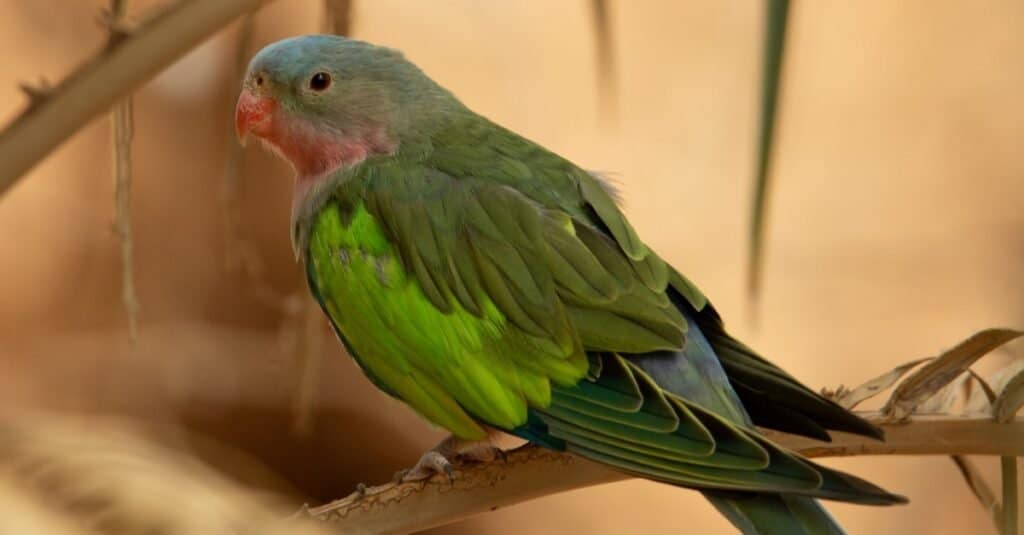
One of the more beautiful of the different types of pet birds, the Princess of Wales Parakeet looks like a flying sherbet.
©Ian Peter Morton/Shutterstock.com
Lovebirds – Most lovebirds live for 10 to 25 years in captivity, however, this is dependent on their kind and how they are cared for. These birds may have similar life expectancies to their wild relatives.
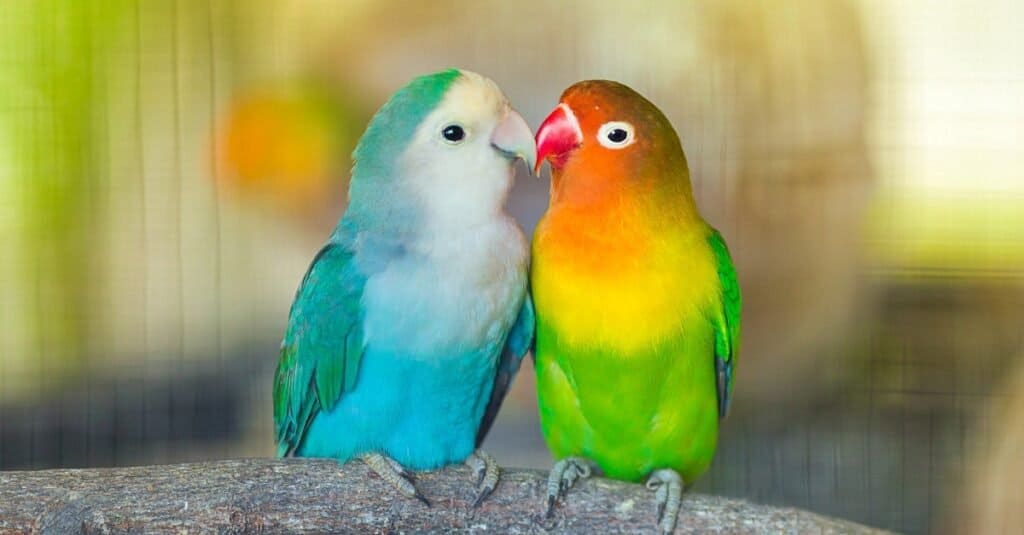
Monogamy in Lovebirds is essential to the social stability of flocks and underlies much of their social behavior.
©iStock.com/apichon_tee
Canaries – Household canaries can live up to 15 years, although most live between 9 and 10. Wild canaries may live much longer if they avoid predators and have plenty of food.
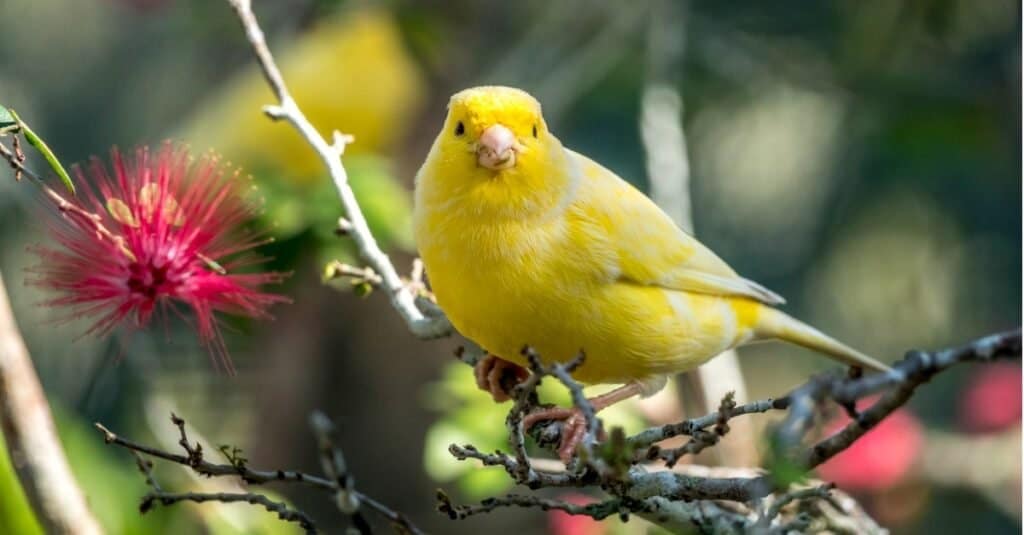
The yellow canary, Crithagra flaviventris, is a small passerine bird in the finch family. This type of pet bird is one of the most popular domestic birds.
©iStock.com/johnandersonphoto
Cockatiels – In the wild, the cockatiel has a life expectancy of 10 to 15 years. A well-cared-for tame cockatiel can survive for 20 to 25 years, thanks to a good and nutritious diet.
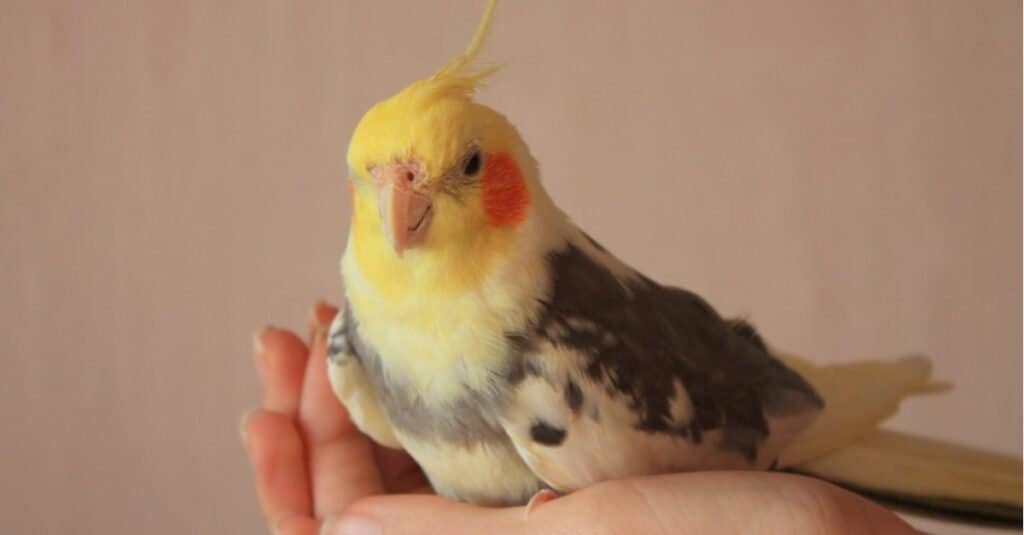
Yellow pet Cockatiel sitting on a human hand.
©iStock.com/sapozhnik
African Greys – In the wild, African grey parrots live for 25 years. They can live in captivity for up to 50 years with the correct diet and care. In the wild, African grey parrots are believed to live past 80 years of age in some extreme cases.

One of the most well-known grey animals, an African Grey parrot, stands on a natural wooden perch.
©iStock.com/n1kcy
What Pet Bird Is Known To Have The Longest Lifespan?
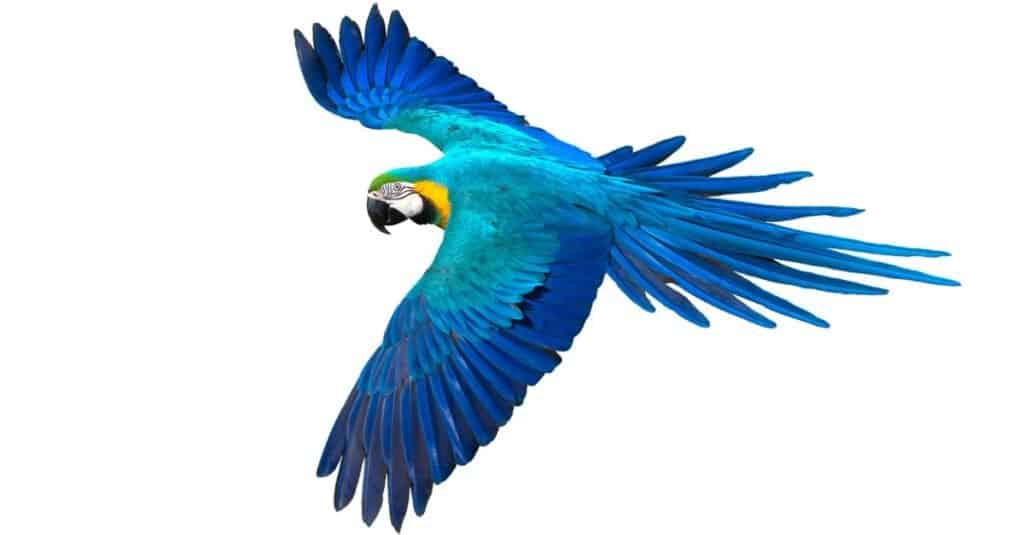
Macaws have the longest lifespan of all parrot species. They can live for up to 50 years, although some have been said to pass 100 years old!
©BirdHunter591/Shutterstock.com
The oldest living bird was a cockatoo named Cookie that lived in a zoo near Chicago. Cookie was 83 years old when he passed away. There are reports of cockatoos that reached even older ages (one reportedly lived to 120 years old), but verifying whether these ages were real is difficult, so Cookie takes the crown as the world’s oldest bird.
Another claim to the crown of the oldest living birds belongs to Charlie the macaw. Charlie’s owner claims the bird reached 114 years old and once belonged to Winston Churchill. However, some of the claims around Charlie’s age and past have been challenged.
Macaws are among the parrot species with the longest lifespans. If they are in good health, macaw parrots can live for up to 50 years.
Effective Ways to Increase Your Pet Birds Lifespan
To increase your pet bird’s lifespan, feed them high-quality bird food. Sadly, the nutrition that birds in captivity eat is the leading cause of issues.
And, don’t forget to give them some physical activity. Birds require a lot of time outside of their cages.
Also, it is essential to make good friends with your bird. Don’t ignore them, they need and thrive for your attention!
What Are The Most Common Causes Of Death In Domesticated Birds?
The most common reasons for sudden death include poison, a virus, or issues with internal organs, which are usually genetic.
Did you know?
When a bird dies for no obvious reason, the veterinarian performs a “necropsy.” (This is the term used for an autopsy on an animal species.)
Signs That A Pet Bird Is Sick Or Dying:
- Changes in Eating and Drinking Habits
- Variation or Difference in Breathing
- Changes in Legs and/or Feet
- Feathers Change
- Head Appearance Change
- Change in Color, Consistency, Volume of Droppings
- Attitude or Behavior Change
- Changes in Appearance
Wild Birds: Top 5 Most Common Wild Birds And Their Life Expectancy
It’s not just pet birds that have incredible variations in their lifespans. Wild birds also live for very different amounts of time. Let’s dive into the lifespan of five common birds.
Mourning Dove – A mourning dove lives for only 1.5 years on average. Many die within the first year of life. About 58% of adults and 69% of young mourning doves perish each year. If not hunted or preyed upon, mourning doves can reach advanced ages. One tracked mourning dove lived 31 years!

Paloma makes perfect sense for this bird considering the word translates to “dove.”
©iStock.com/Janet Griffin-Scott
Northern Cardinal – The northern cardinal lives in the wild for an average of three years, though some have lived for up to 15 years.

The cardinal is the state bird of North Carolina.
©iStock.com/Lynnae_Lowe
American Robin – The average lifespan of an American Robin in the wild is two years, yet one wild Robin was known to reach 14 years old.
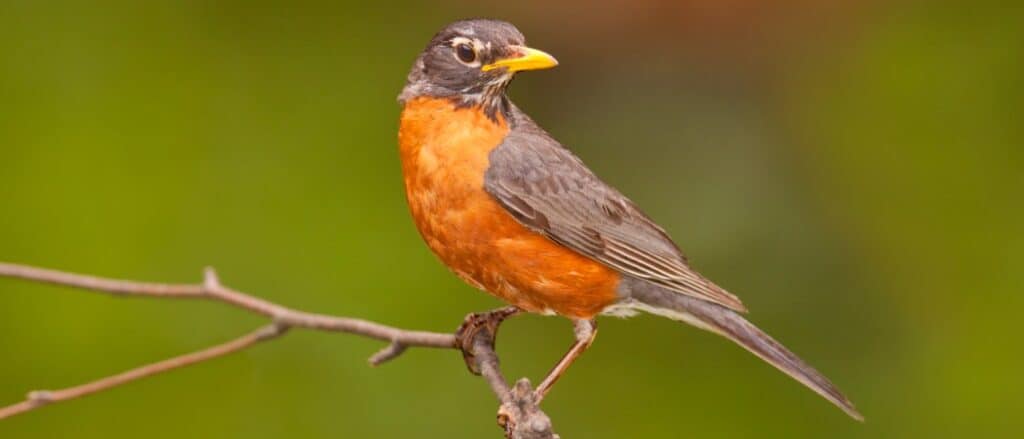
American robins are extremely territorial.
©iStock.com/Silfox
Crow – The crow lives for about 7-8 years in the wild but they have been known to live up to 30 years in captivity.
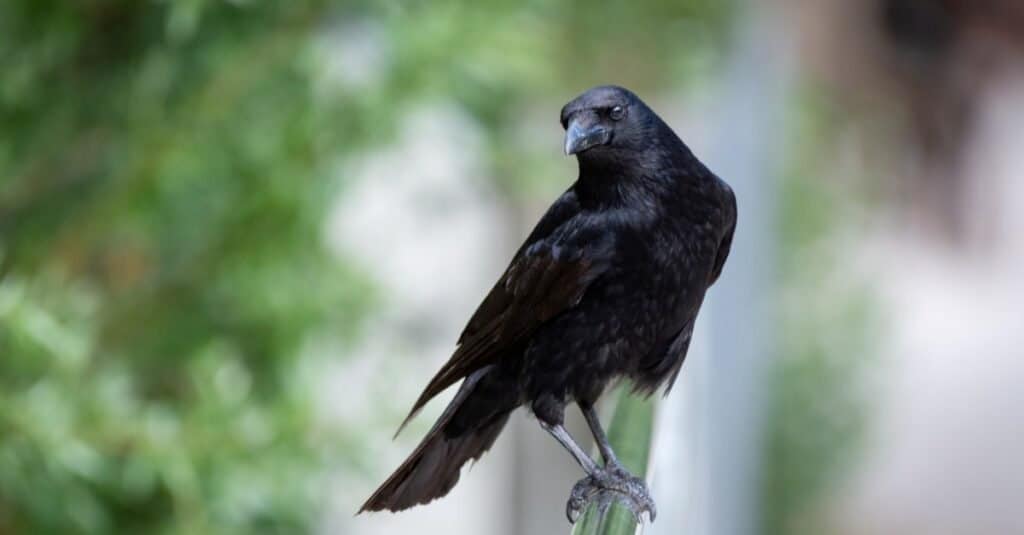
Crows are one of the smartest birds in the world.
©Cesar Quesada Contreras/Shutterstock.com
Blue Jay – The oldest blue jay studied by researchers in the wild was 17 years and 6 months old, although the average lifespan of a blue jay is roughly seven years. One Female in captivity had a 26-year, 3-month lifespan.
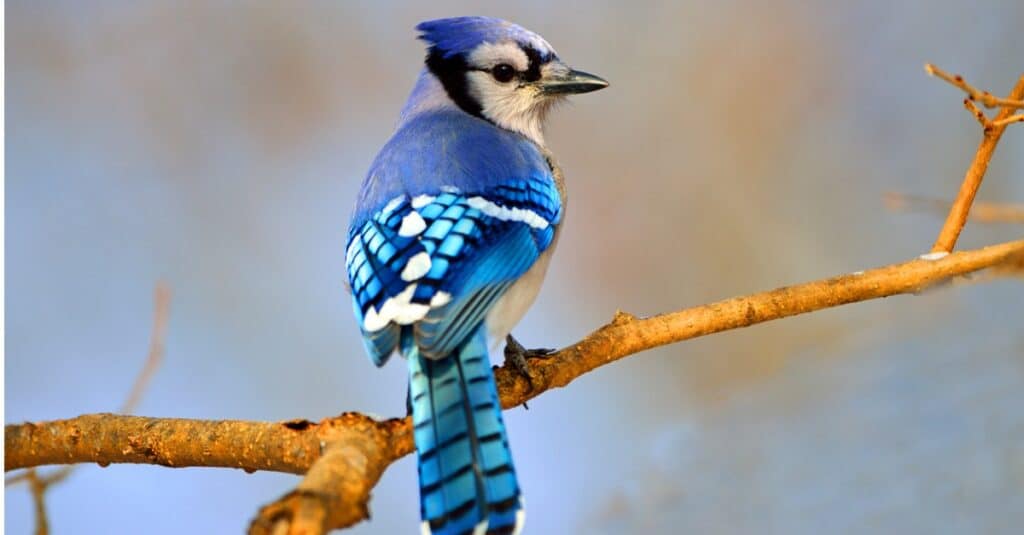
Beech and oak trees are the most common places where bluejays forage.
©iStock.com/BrianEKushner
What Are The Most Common Causes Of Death In Wild Birds?
Wild birds die via collisions with human constructions, chemical and environmental poisoning, and attacks by cats and other animals. Some examples of diseases are botulism and the quickly spreading West Nile virus.
What Are Some Humane Ways To Remove Wild Birds Without Harming Them?
An unwelcome bird problem can be solved in several humane ways including:
- Visual Bird Deterrents
- Sonic Bird Deterrents
- Plastic Bird Spikes
These can all be used to distract, intimidate, and block birds.
The photo featured at the top of this post is © JCM Photos/Shutterstock.com
Thank you for reading! Have some feedback for us? Contact the AZ Animals editorial team.







